Boxer s fracture treated by boxers cast vs. k-wire fixation
Received: 29-Jul-2021 Accepted Date: Aug 15, 2021 ; Published: 25-Aug-2021, DOI: 10.37532/1897-2276.2021.16(1).35
This open-access article is distributed under the terms of the Creative Commons Attribution Non-Commercial License (CC BY-NC) (http://creativecommons.org/licenses/by-nc/4.0/), which permits reuse, distribution and reproduction of the article, provided that the original work is properly cited and the reuse is restricted to noncommercial purposes. For commercial reuse, contact reprints@pulsus.com
Abstract
Introduction: Despite being one of the most common injuries in orthopaedics, accounting for about 1/10th of all fractures and up to 2/5th of all hand fractures, the treatment modalities of 5th metacarpal head fractures are controversial in the literature, ranging from conservative management in most cases to minimally invasive surgeries using k-wires and screws.
Material and Methods: This comparative study was carried out by assessing patients with fractures of the neck of the 5th metacarpal admitted to D Y Patil Medical College, Hospital and Research Centre from July 2020 to March 2021. 20 patients qualified for the inclusion criteria, 10 being in one group and 10 in the other. K-wire fixation was done for the management of the 5th metacarpal neck fracture in one group while the other group was managed conservatively (boxer’s cast). The groups were classified according to age, sex, mechanism of injury etc. The mean time between getting hospitalized and commencement of surgery (in cases of k wire fixation) was 2 days.
Discussion: The most common age group was found to be 31-40 (80%), with a male predominance of 95%, right to left side ratio of 17:3. On tabulating the data, after three months of follow up, we discovered there was no significant difference in the TAM (total active movement) between the affected and unaffected hand when k-wire fixation was used. There was a certain degree of malrotation in patients treated by conservative management. Overall, cases with a neck-shaft angle of more than 40 degrees seemed to show better results when treated by k-wire fixation but when integrated with patient satisfaction, cases with a neck-shaft angle of fewer than 30 degrees yielded good results when treated by boxer’s cast.
Conclusion: When the neck-shaft angle is greater than 40-45 degrees, k-wire fixation is a better alternative to a boxer’s cast in the treatment of a boxer’s fracture.
Keywords
boxer, fracture, 5th metacarpal, k wire, cast
Introduction
Despite being one of the most common injuries in orthopaedics [1-3], accounting for about 1/10th of all fractures and up to 2/5th of all hand fractures, the treatment modalities of 5th metacarpal head fractures are controversial in the literature, ranging from conservative management in most cases to minimally invasive surgeries using k-wires and screws. The 5th metacarpal neck fracture is the most common metacarpal fracture. It is also referred to as boxer’s fracture, brawler’s fracture or bar room fracture [4].
MECHANISM OF INJURY
Boxer’s fractures are an impaction injury caused by axial loading of the 5th metacarpal caused by a direct punch with a clenched fist on a solid surface. Walls or human faces are frequent solid surfaces, with young adult men (95%) being the most typically afflicted demographic (Figures 1,2).
Fractures of the 4th and 5th metacarpals are more common than those of the 2nd and 3dd metacarpals because normally, boxers punch with proper form, and the knuckles of the 2nd and 3rd metacarpal align linearly with the articulating radius, followed by the humerus, allowing force to travel across joints without injury [5-7].
Patients and Methods
PARTICIPANT DEMOGRAPHICS
This comparative study was carried out by assessing patients with fractures of the neck of the 5th metacarpal admitted to D Y Patil Medical College, Hospital and Research Centre from July 2020 to March 2021. A group of these patients were treated conservatively using a Boxer’s Cast while the others were treated by k-wire fixation. The decision to use cast or k-wire fixation was random without any age/sex/fracture pattern bias and discussed with patients in detail after taking appropriate consent. Randomization was done with each patient picking a card blindly from a decreasing stack of 20 cards, initially consisting of 10 cards labelled ‘K-wire’ and 10 cards labelled ‘Boxer’s Cast’.
INCLUSION CRITERIA
• Age group between 18-50 years
• Unilateral fracture
• Closed fracture
• No history of diabetes, rheumatoid arthritis or gout
• Presenting within 1 week of the injury
EXCLUSION CRITERIA
• Patients with polytrauma, associated fractures of shoulder, elbow wrist
• Patients with severe cardiac and cerebrovascular diseases
• Intra-articular fractures
20 patients qualified for the inclusion criteria, 10 being in one group and 10 in the other. K-wire fixation was done for the management of the 5th metacarpal neck fracture in one group while the other group was managed conservatively (boxer’s cast). The groups were classified according to age, sex, mechanism of injury etc. The mean time between getting hospitalized and commencement of surgery (in cases of k wire fixation) was 2 days.
SURGICAL METHOD/ K-WIRE FIXATION (ANTEGRADE)
• The entry point of the k wire, awl, or drill for the 5th metacarpal should be dorso-ulnar at the metacarpal base to avoid injury of the carpometacarpal joints, acknowledging the insertion of the extensor carpi ulnaris tendon [8,9]
• It is of utmost importance to make sure the protruding end of the K wire, bone awl, or drill does not get in the way of the gliding extensor tendon
• K-wire is pre-bent
• K wire’s distal tip is bent to around 20 degrees
• The wire is then bent to approximately 10° after about 2 cm
• Fixation with two K wires provides two points of fixation, improving stability and preventing K wire back out from the proximal end (Figures 3,4)
CONSERVATIVE METHOD/ BOXER’S CAST
• Method of reduction: As collateral ligaments are the only remaining connection to the metacarpal head, they must be tightened to control the distal fragment and accomplish reduction. The Metacarpo Phalangeal (MP) joint is flexed to 90 degrees to cause the MP collateral ligaments to constrict. The flexed metacarpal is oriented dorsally, affecting the reduction of the metacarpal head due to volar angulation correction
• Regardless of the casting procedure chosen, the little and ring fingers must be “buddy taped” (with an intervening layer of cast padding) to prevent fracture malrotation [10] (Figure 5)
FOLLOW UP
The patients were followed up on postoperative weeks 3, 8 and 12
• TAM (Total Active Movement) was observed at the metacarpophalyngeal and interphalyngeal joints during each follow-up
• Total active movement=total active flexion-total extension deficit
• Pre-op, rotation deformity was noted at the neck-shaft angle, and post-op, the percentage of angular rectification was evaluated and compared to conservative management (Figure 6)
Results
Results are mentioned in Tables 1-5.
| Age in years | Cases | Percentage |
|---|---|---|
| <20 | 1 | 5% |
| 20-30 | 1 | 5% |
| 31-40 | 16 | 80% |
| >40 | 2 | 10% |
Table 1. Age Distribution
| Sex | Cases | Percentage |
|---|---|---|
| Male | 19 | 95% |
| Female | 1 | 5% |
Table 2. Sex Distribution
| Side | Cases | Percentage |
|---|---|---|
| Right | 17 | 85% |
| Left | 3 | 15% |
Table 3. Side
| S.No | TAM of affected side on previous follow up | TAM of unaffected side on previous follow up | Neck shaft angle (pre-op) | Neck shaft angle (post-op) |
|---|---|---|---|---|
| 1 | 275 | 280 | 60 | 25 |
| 2 | 260 | 265 | 66 | 18 |
| 3 | 300 | 300 | 62 | 16 |
| 4 | 285 | 290 | 68 | 20 |
| 5 | 275 | 280 | 70 | 22 |
| 6 | 290 | 295 | 54 | 18 |
| 7 | 270 | 275 | 58 | 22 |
| 8 | 280 | 285 | 65 | 24 |
| 9 | 300 | 305 | 61 | 15 |
| 10 | 265 | 265 | 68 | 18 |
| MEAN | 280 | 284 | 63 | 20 |
Table 4. Treatment using K-wire fixation
| S.No | TAM of affected side on previous follow up | TAM of unaffected side on previous follow up | Neck shaft angle (pre-op) | Neck shaft angle (post-op) |
|---|---|---|---|---|
| 1 | 250 | 278 | 66 | 57 |
| 2 | 265 | 282 | 67 | 51 |
| 3 | 255 | 272 | 32 | 27 |
| 4 | 250 | 278 | 47 | 37 |
| 5 | 270 | 296 | 37 | 27 |
| 6 | 265 | 286 | 37 | 22 |
| 7 | 285 | 304 | 35 | 24 |
| 8 | 266 | 288 | 66 | 52 |
| 9 | 272 | 298 | 32 | 26 |
| 10 | 255 | 276 | 32 | 20 |
| MEAN | 263 | 286 | 45 | 32 |
Table 5. Treatment using Boxer’s Cast
Discussion
In our study, 20 patients with a fracture of the neck of the 5th Metacarpal were assessed at D Y Patil Medical College from July 2020 to March 2021. The most common age group was found to be 31-40 (80%), with a male predominance of 95%, right to left side ratio being 17:3. On tabulating the data, after three months of follow up:
Mean Total Active Movement (TAM) of the affected side was 280 and the mean Total Active Movement (TAM) of the unaffected side was 284 in the case of k-wire fixation.
Mean Total Active Movement (TAM) of the affected side was 263 and the mean Total Active Movement (TAM) of the unaffected side was 286 in the case of the boxer’s cast.
Mean improvement of neck-shaft angle, calculated by the difference of mean pre-op neck-shaft angle (63 degrees) and mean post-op neckshaft angle (20 degrees) was 37 degrees in the case of k-wire fixation.
Mean improvement of neck-shaft angle, calculated by the difference of mean pre-op neck-shaft angle (45 degrees) and mean post-op neckshaft angle (32 degrees) was 13 degrees in the case of boxer’s cast.
Hence, there was no significant difference in the TAM (Total Active Movement) between the affected and unaffected hand and a considerable improvement in neck-s haft angle when k-wire fixation was used.
There was a certain degree of malrotation in patients treated by conservative management. Overall, cases with a neck-shaft angle more than 40 degrees seemed to show better results when treated by k-wire fixation but when integrated with patient satisfaction, cases with a neck-shaft angle less than 30 degrees yielded good results when treated by boxer’s cast.
Limitations
Limitations of this study include patient compliance as one of the patients managed by boxer’s cast was unable to maintain appropriate immobilization by constantly trying to remove the cast every week leading to discrepancies in the ideal result and data for that patient.
Conclusion
Boxer’s fracture or Neck of 5th Metacarpal fracture is more commonly seen in young male adults. Although most patients prefer the prospect of conservative management, it is associated with a certain degree of malrotation and shortening, especially when the neck-shaft angle is more than 40 degrees. 2-point fixation after using 2 Kirschner wires increases the stability when using a surgical approach. When the neck-shaft angle is greater than 40-45 degrees, k-wire fixation is a better alternative to boxer’s cast in the treatment of boxer’s fracture.
Acknowledgements
This study would not have been possible without the unquestionable commitment and dedication of my colleagues and the undeniable efforts of residents working round the clock.
REFERENCES
- Potenza V., Caterini R., De Maio F., et al.: Fractures of the neck of the fifth metacarpal bone. Medium-term results in 28 cases treated by percutaneous transverse pinning. Injury. 2012;43:242-5
- De Jonge J.J., Kingma J., Van der Lei B., et al.: Fractures of the neck of the fifth metacarpal bone. Medium-term results in 28 cases treated by percutaneous transverse pinning. Injury. 1994;25:365-9
- Harris A.R., Beckenbaugh R.D., Nettrour J.F., et al.: Metacarpal neck fractures: Results of treatment with traction reduction and cast immobilization. Hand. 2009;4:161-4.
- Cepni S.K., Aykut S., Bekmezci T., et al. A minimally invasive fixation technique for selected patients with fifth metacarpal neck fracture. Injury. 2016;47:1270-5
- Diaz-Garcia R., Waljee J.F.: Current management of metacarpal fractures. Hand Clinics. 2013;29:507-18
- Kim J.K., Kim D.J.: Antegrade intramedullary pinning versus retrograde intramedullary pinning for displaced fifth metacarpal neck fractures. Cli Orthop Rel Res. 2015;473:1747-54
- Wong T.C., Ip F.K., Yeung S.H.: Comparison between percutaneous transverse fixation and intramedullary K-wires in treating closed fractures of the metacarpal neck of the little finger. J Hand Surg. 2006;31:61-5
- Facca S., Ramdhian R., Pelissier A., et al.: Fifth metacarpal neck fracture fixation: locking plate versus K-wire?. Ortho Traumatol: Surg Res. 2010;96:506-12
- Trabelsi A., Dusserre F., Asencio G., et al.: Orthopedic treatment of fractures of the neck of the fifth metacarpal: a prospective study. Hand Surg. 2001; 20:226-30
- Alnot JY.: Les fractures du col des metacarpiens. Acta Ortop Belg. 1973;39:1100-8.

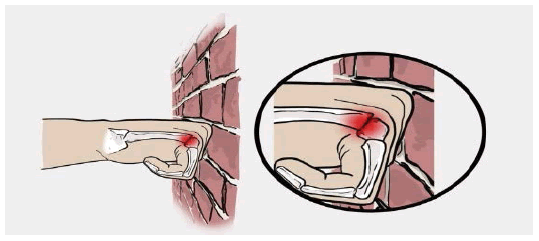
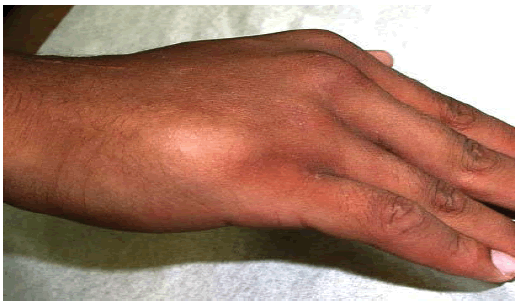
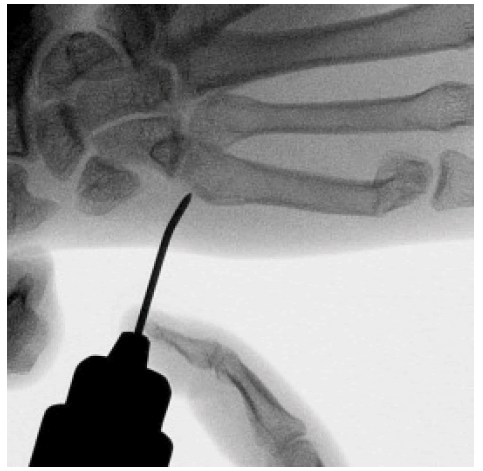
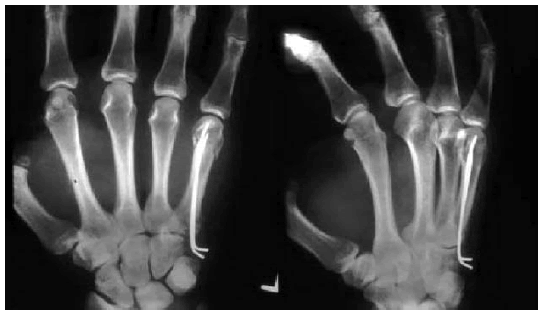

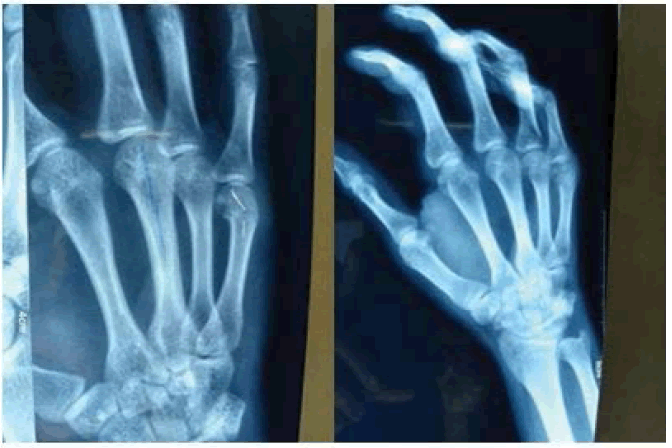


 Journal of Orthopaedics Trauma Surgery and Related Research a publication of Polish Society, is a peer-reviewed online journal with quaterly print on demand compilation of issues published.
Journal of Orthopaedics Trauma Surgery and Related Research a publication of Polish Society, is a peer-reviewed online journal with quaterly print on demand compilation of issues published.